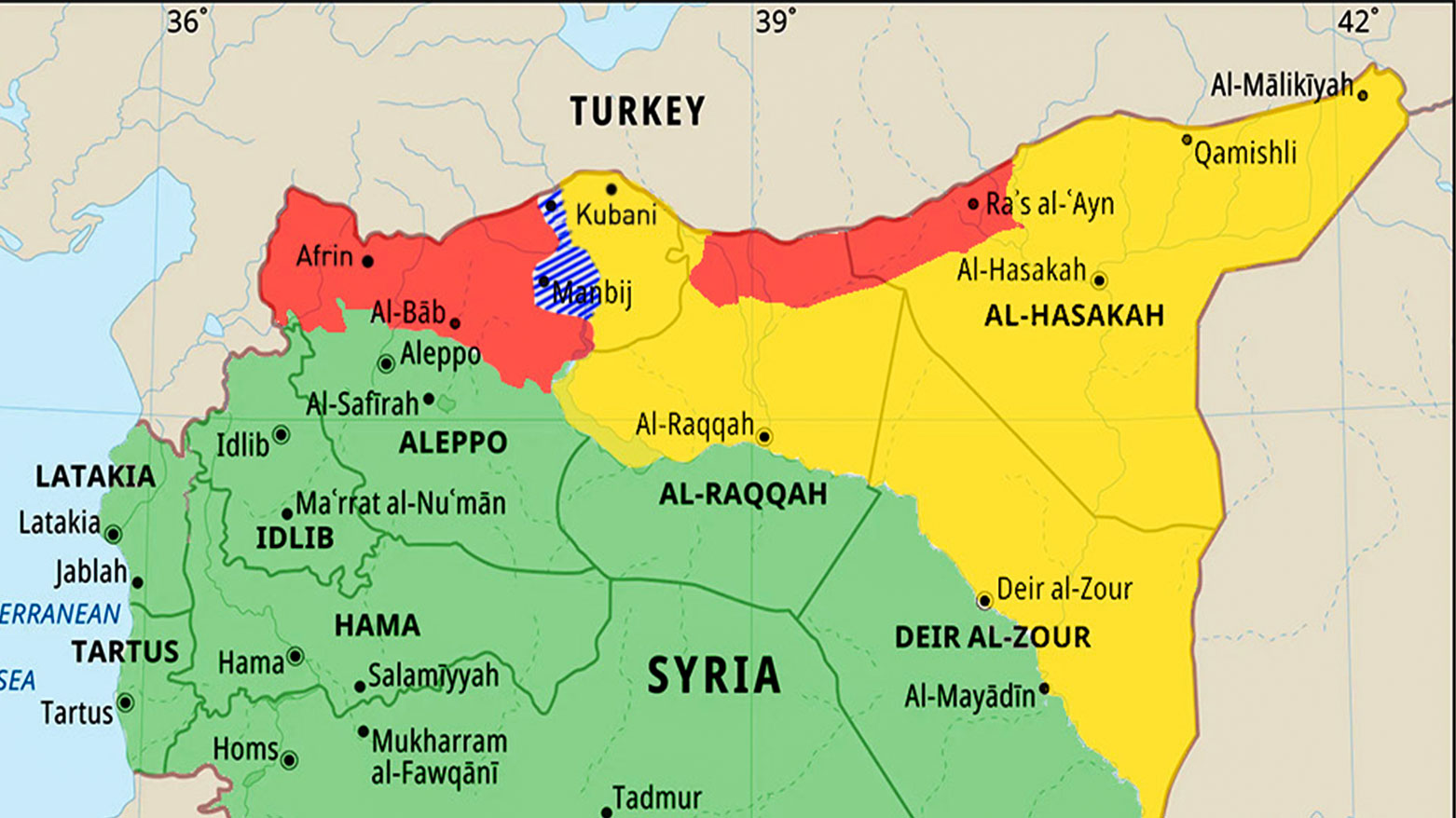U.S. Inspector General Report Details Syria’s Tumult Amid Post-Assad Transition
The U.S. does not recognize Syria’s interim government and labels interim president Ahmed al-Sharaa a terrorist. Despite withdrawing 600 troops from Western Kurdistan, its policy goals remain unchanged.

By Ahora Qadi
ERBIL (Kurdistan24) – The latest quarterly report from the Lead Inspector General for Operation Inherent Resolve (OIR), submitted to the U.S. Congress and covering January 1 through March 31, 2025, paints a complex and volatile picture of Syria in the wake of the Assad regime’s collapse in December 2024.
According to the report, Combined Joint Task Force–OIR (CJTF-OIR) responded to a dramatically shifting security, political, and humanitarian environment as the newly formed interim authorities struggled to consolidate control.
Though U.S. military operations in Syria continued, they were impacted by the evolving security dynamics. In April, U.S. officials announced the withdrawal of roughly 600 troops from northeastern Syria and the closure of three military bases. Despite these changes, U.S. policy objectives remained largely unchanged pending the results of a broader strategic review.
No Recognition for Interim Authorities
While the interim authorities have restructured to be more inclusive after the disbandment of Hay’at Tahrir al-Sham (HTS), which initially led the body, the United States has not recognized them. Ahmed al-Sharaa, the interim president, remains designated "a terrorist" due to his former leadership of Jabhat al-Nusra.
Washington reaffirmed that recognition of any governing body in Syria would require a clear renunciation of terrorism, exclusion of terrorist actors from leadership, and protections for all ethnic and religious groups.
Suspension of Stabilization Assistance
On January 24, the U.S. paused all State Department and USAID stabilization programs in Syria as part of a 90-day foreign assistance review. USAID's Middle East Bureau reported that eight programs were terminated, while three remained active. Waivers for critical services, including support for the White Helmets, had been requested but not granted by the end of the quarter.
One State Department stabilization initiative focused on community security in northeastern Syria (Western Kurdistan) resumed temporarily in February under a limited 60-day exception. However, all third-party monitoring was paused or cancelled, and one implementing partner ceased operations due to lack of funding.
Shifting Military Alignments and Persistent Disputes
CJTF-OIR reported several major developments in Syria’s security landscape. The Syrian Free Army (SFA) officially joined the interim authorities' military structure. Meanwhile, the Syrian Democratic Forces (SDF) reached a preliminary agreement with the interim authorities to unify control over oil fields and border crossings. Yet, force integration remained unresolved, with the interim authorities insisting on dispersing SDF fighters individually, while the SDF sought to preserve a unified command.
Political tensions also lingered, as the Democratic Autonomous Administration of North and East Syria (DAANES) and Kurdish National Council in Syria (KNCS) rejected the interim constitution due to what they called centralist and sectarian features.
Interim Authorities’ Security and Capabilities
HTS and allied militias were absorbed into the interim security forces, but some southern armed groups resisted integration. CJTF-OIR assessed that the interim forces remained limited in capability and dependent on foreign assistance.
Despite these limitations, they conducted modest counterterrorism operations, including the foiling of an ISIS attack on a Shia mosque in Damascus. The interim authorities also began collecting abandoned regime weapons, including tanks, artillery, and anti-aircraft systems—some of which were destroyed by Israeli airstrikes.
Continued U.S. Security Support
The United States continued funding for the SDF and SFA under the Counter-ISIS Train and Equip Fund (CTEF), providing stipends, non-lethal equipment, and training. The SDF maintained counter-ISIS operations amid clashes with Turkish-backed groups, rising tensions with Arab tribes, and the political uncertainty following Assad’s fall.
SDF forces extended operations into Raqqah and Dayr az Zawr, capturing key ISIS operatives. U.S.-funded efforts to bolster detention facility security also continued, though with limited results. No new guard training took place during the quarter due to competing operational priorities.
Turkish Strikes Damage Key Infrastructure
One of the most severe setbacks came from Turkish airstrikes targeting the Tishreen Dam. The strikes caused major damage, halting power generation and flooding lower sections of the dam. Emergency responses included deploying backup power systems and submersible pumps, but ongoing hostilities hindered technical assessments and repairs.
U.S. Mediates to De-escalate Tensions with Türkiye
The United States facilitated dialogue between the SDF and Turkish-backed forces, leading to limited de-escalation. U.S. officials also met with Turkish leaders in Ankara to promote regional stability and coordination.
Türkiye expressed openness to cooperating with the interim authorities and even offered to assume responsibility for ISIS detention centers if required.
Camp Crisis and Repatriation Efforts
Al-Hol and Roj camps remained hotspots of concern. Despite the continued presence of ISIS loyalists, services at the camps resumed within 48 hours of being disrupted, thanks to a granted waiver. Al-Hol’s population dropped to approximately 36,000, while Roj housed around 2,400 people.
Iraq repatriated over 1,500 families from the camps to Jeddah-1 camp, while other countries showed minimal engagement. Austria accepted five nationals, and Syrian repatriations from al-Hol were halted amid the aid suspension.
Internal Displacement and Strained Services
Northern Syria (Afrin City and other areas under the Turkish backed forces) witnessed ongoing mass displacement, with an estimated 82,800 internally displaced persons (IDPs) returning to their home areas. However, large numbers remain stranded due to persistent conflict. The influx overwhelmed local schools and healthcare systems, compounding an already critical humanitarian situation.
Diplomatic Engagements and Regional Coordination
U.S. diplomats held several rounds of meetings with Turkish officials to support the political transition in Syria and reinforce counter-ISIS cooperation. Türkiye increased its role in northern Syria, engaging in infrastructure projects and expressing political backing for the interim authorities.
The interim Syrian authorities have begun regional outreach, with Türkiye preparing multilateral talks involving Syria, Iraq, Jordan, and Lebanon to coordinate on security and counterterrorism measures.
